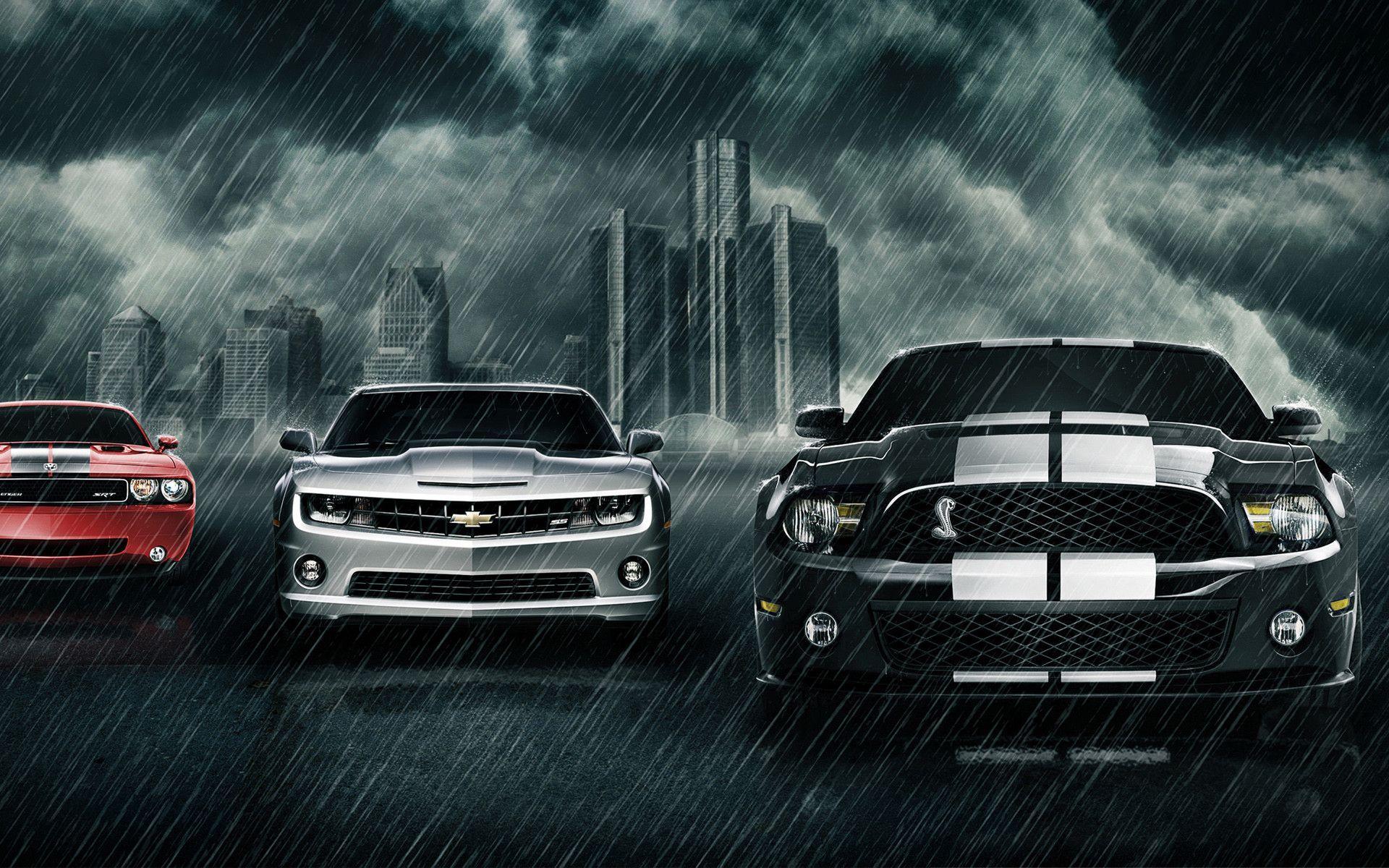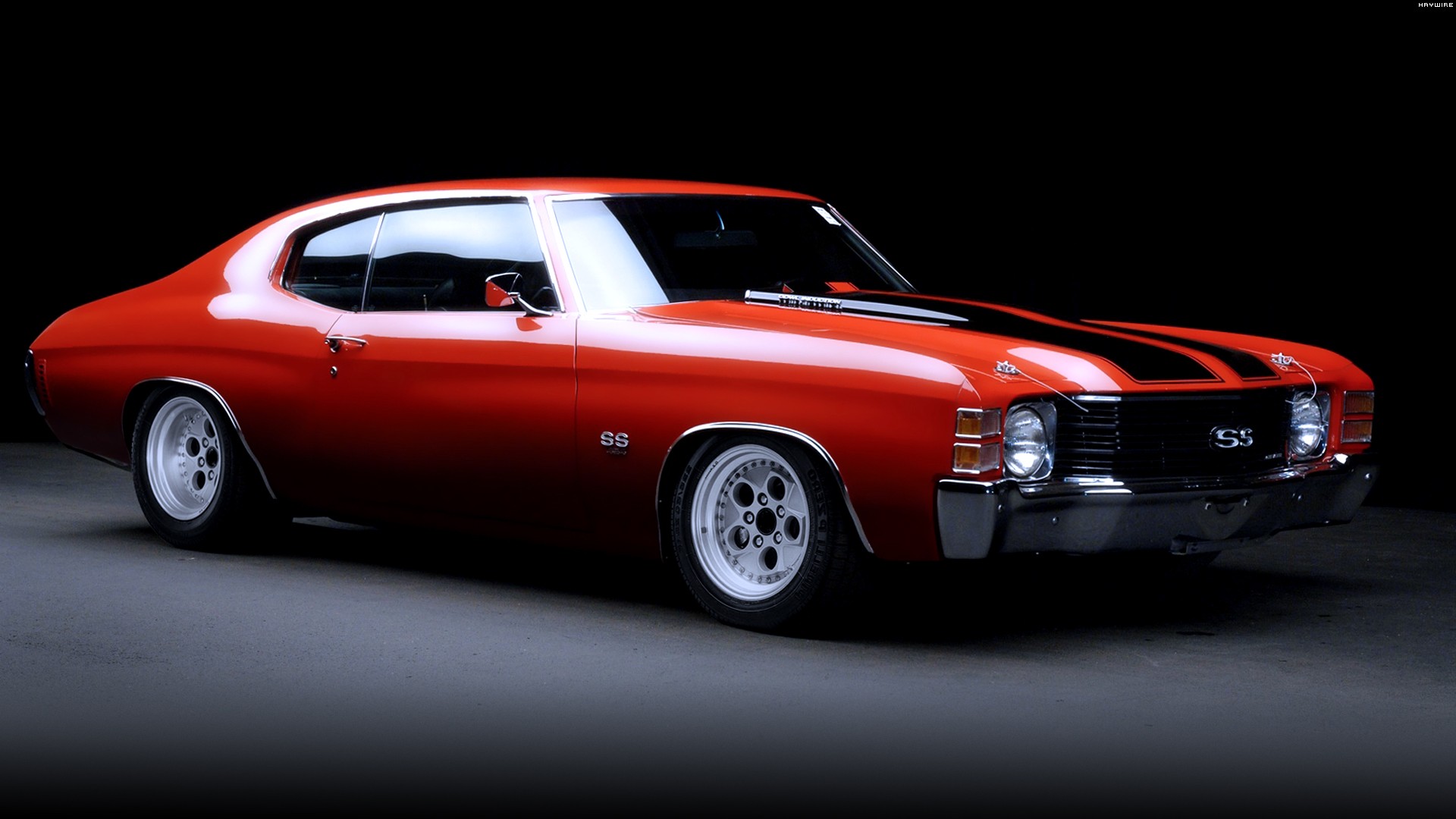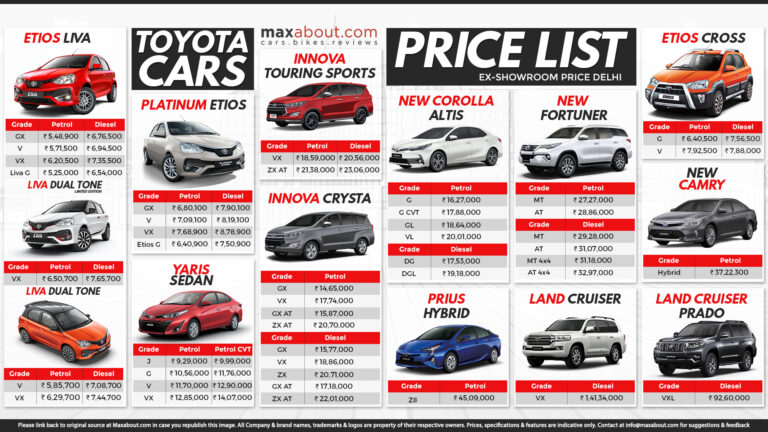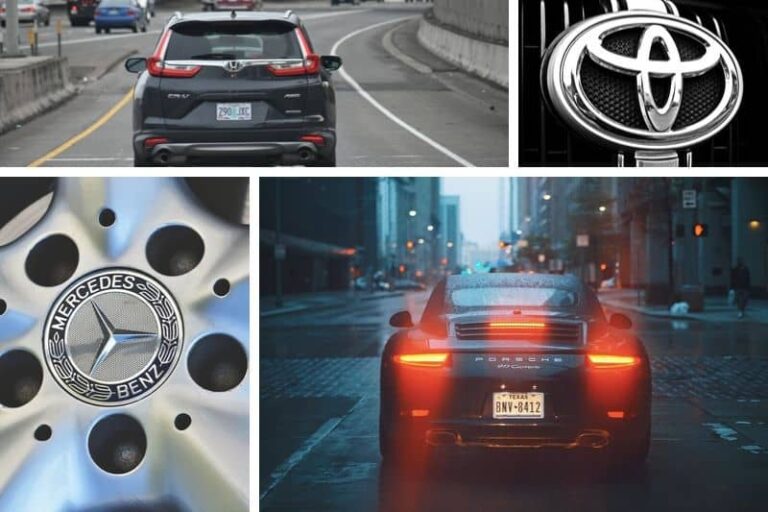Muscle Car Brands: The Roar, The Power, The Legacy
Muscle Car Brands: The Roar, The Power, The Legacy cars.truckstrend.com
Introduction: The Unmistakable Symphony of American Power
Few automotive genres evoke the same visceral excitement and nostalgic reverence as the muscle car. More than just vehicles, muscle cars are thundering monuments to American ingenuity, raw power, and an unbridled passion for speed. Born from an era of optimism and technological ambition, these machines defined an entire generation, etching their distinctive silhouettes and roaring V8 engines into the very fabric of popular culture. At their core, a muscle car is typically an American-made, two-door, mid-size or full-size car fitted with a large, powerful V8 engine, designed for high-performance driving, particularly in straight-line acceleration.
Muscle Car Brands: The Roar, The Power, The Legacy
The importance and relevance of muscle car brands transcend mere transportation. They represent a unique chapter in automotive history, a golden age where horsepower reigned supreme and manufacturers competed fiercely to produce the most potent and visually striking machines. These brands didn’t just sell cars; they sold dreams of freedom, rebellion, and unparalleled performance. From their explosive birth in the 1960s to their modern resurgence, muscle car brands continue to captivate enthusiasts, collectors, and new generations alike, proving that the allure of unadulterated American power is truly timeless. This comprehensive guide will delve into the legendary brands that forged the muscle car phenomenon, explore their defining characteristics, and offer insights into their enduring appeal.
The Big Three: Architects of American Muscle
The heart of the muscle car era undeniably belonged to America’s "Big Three" automakers: Ford, General Motors (GM), and Chrysler. Each brought their unique philosophy and iconic models to the asphalt, igniting a horsepower war that yielded some of the most legendary vehicles ever conceived.
Ford: The Blue Oval’s Roaring Legacy
Ford’s entry into the muscle car arena was spearheaded by a car that arguably created its own sub-segment: the Mustang. While often classified as a "pony car" due to its smaller size, the Mustang quickly transcended this definition, especially when equipped with big-block V8s.
- Ford Mustang: Launched in 1964, the Mustang was an instant sensation. Ford quickly realized its potential beyond simple affordability, offering high-performance variants like the Boss 302 (designed for Trans Am racing) and the formidable Boss 429 (built to homologate the massive 429 cubic inch "shotgun" engine for NASCAR). The Shelby GT350 and GT500, developed in collaboration with racing legend Carroll Shelby, further cemented the Mustang’s high-performance credibility, turning it into a true track and street monster.
- Ford Torino Cobra: A full-size muscle car, the Torino Cobra, especially the 1969-1970 models, packed serious punch with engines like the 428 Cobra Jet and later the 429 Super Cobra Jet. Its fastback styling and aggressive stance made it a formidable competitor.
- Ford Fairlane: Often overlooked, the Fairlane, particularly the Fairlane GT and Cobra models of the late 1960s, also housed powerful V8s, offering muscle car performance in a slightly more understated package.

Chevrolet: The Bowtie’s Dominance
Chevrolet, GM’s largest division, was a prolific producer of muscle, offering a diverse range of powerful options across its lineup.
- Chevrolet Camaro: Chevy’s direct answer to the Mustang, the Camaro (introduced in 1967) quickly became an icon. Performance variants like the Z/28 (tuned for road racing with a high-revving small block) and the SS (Super Sport) models with big-block 396 and 427 cubic inch V8s (and later 454s) made it a street and strip legend.
- Chevrolet Chevelle: Perhaps the quintessential GM muscle car, the Chevelle SS reached its zenith in 1970 with the optional LS6 454 cubic inch V8, conservatively rated at 450 horsepower – one of the most powerful production engines of its time. Its aggressive styling and brute force made it a favorite.
- Chevrolet Nova SS: A compact, lightweight platform that, when combined with a powerful V8, became a drag strip terror. The Nova SS 396 offered tremendous power-to-weight ratio.
- Chevrolet Impala SS: While more of a full-size performance car, the Impala SS models of the mid-1960s (particularly with the 409 and 427 engines) possessed undeniable muscle car characteristics, offering speed in a more luxurious package.


Dodge & Plymouth (Chrysler’s Brands): The Hemi’s Reign
Chrysler Corporation, through its Dodge and Plymouth divisions, unleashed some of the most outrageous and revered muscle cars, often synonymous with the legendary HEMI engine.
- Dodge Charger: Immortalized in film and folklore, the Charger R/T (Road/Track) from 1968-1970, especially with the optional 426 HEMI, is an undisputed muscle car icon. Its distinctive "coke bottle" styling and sheer road presence were unmatched.
- Dodge Challenger: Introduced in 1970, the Challenger offered a wider, more luxurious "pony car" alternative. Its muscle variants, especially the R/T and the ultra-rare Challenger R/T with the 426 HEMI, are highly sought after collector’s items.
- Plymouth Barracuda: Initially a fastback version of the Valiant, the Barracuda truly came into its own in 1970 with its "E-body" platform, shared with the Challenger. The Plymouth Hemi ‘Cuda, with its massive 426 HEMI engine, is considered by many to be the pinnacle of muscle car performance and rarity.
- Plymouth Road Runner: Designed to be a no-frills, affordable performance car, the Road Runner (introduced in 1968) focused solely on speed. Its cartoon character branding and signature "beep-beep" horn added to its charm, while engines like the 383, 440 Six-Pack, and the 426 HEMI made it a formidable street machine.
- Plymouth GTX: Marketed as the "gentleman’s muscle car," the GTX offered performance with a touch more luxury than the Road Runner, often featuring the potent 440 Super Commando V8.
Other Notable Contenders: Beyond the Big Three
While the Big Three dominated, other GM divisions also contributed significantly to the muscle car pantheon, creating distinct and powerful machines.
- Pontiac: Often credited with inventing the muscle car genre with the Pontiac GTO. Launched in 1964 as an option package for the mid-size LeMans, the GTO combined a large 389 cubic inch V8 with a relatively lightweight body, proving that a big engine in a small car was a winning formula. The GTO "Judge" models of the late 60s and early 70s became instantly recognizable with their vibrant colors and bold graphics. Pontiac also produced the iconic Firebird Trans Am, a performance variant of the Firebird pony car that gained legendary status, particularly in the late 1970s.
- Oldsmobile: Oldsmobile’s entry into the muscle car fray was the 442. The name famously stood for "4-barrel carburetor, 4-speed manual transmission, dual exhaust" (though the meaning evolved). The 1970 442 W-30 models, powered by a massive 455 cubic inch V8, are particularly prized for their raw power and unique ram-air intake system.
- Buick: Often associated with luxury, Buick surprised many with its potent muscle offerings. The Buick GSX (Gran Sport Experimental) from 1970 stands out as a true sleeper, packing a monstrous 455 cubic inch V8 that produced immense torque, making it surprisingly quick off the line.
The Modern Resurgence: A New Era of Horsepower
After a period of decline in the 1970s and 80s due to emissions regulations, rising fuel costs, and changing consumer tastes, muscle cars experienced a powerful resurgence in the 21st century. Today’s muscle car brands blend classic styling cues with cutting-edge technology, delivering performance levels unimaginable in the golden era.
- Dodge: Leading the charge in modern muscle, Dodge reintroduced the Challenger in 2008 and the Charger as a four-door muscle sedan. Their Hellcat models, featuring supercharged 6.2L HEMI V8s producing over 700 horsepower, shattered expectations and brought the horsepower wars back with a vengeance. The limited-production Demon and Redeye variants pushed the boundaries even further, solidifying Dodge’s position as the king of contemporary American muscle.
- Ford: The Mustang has continuously evolved, maintaining its classic spirit while embracing modern performance. The current generation offers high-performance variants like the Shelby GT500, which boasts over 760 horsepower, making it a formidable track and street machine.
- Chevrolet: The Camaro was resurrected in 2010, bringing back its iconic design and powerful engine options. The Camaro ZL1, with its supercharged V8, competes directly with the Hellcat and GT500, offering blistering acceleration and improved handling.
These modern muscle cars prove that the spirit of raw power, aggressive styling, and accessible performance continues to thrive, appealing to a new generation of enthusiasts while honoring their legendary predecessors.
Key Characteristics of Muscle Car Brands
What unifies these diverse brands and models under the "muscle car" umbrella? Several core characteristics define the genre:
- High-Performance Engines: The absolute cornerstone. Muscle cars are built around large-displacement V8 engines, often referred to as "big blocks," designed for maximum horsepower and, crucially, massive torque.
- Rear-Wheel Drive: Essential for transferring that immense power to the pavement, especially for drag racing.
- Mid-Size or Full-Size Platform: Typically based on existing sedan or coupe platforms, allowing for relatively affordable production and accommodating large engines.
- Distinctive Styling: Aggressive, often boxy or "fastback" designs, with prominent grilles, hood scoops, racing stripes, and chrome accents that conveyed their performance intent.
- Affordability (Initially): In their golden era, muscle cars offered a tremendous amount of performance for a relatively modest price, making them accessible to a broader market than exotic sports cars.
- Focus on Straight-Line Speed: While handling improved over time, the primary focus was always on blistering quarter-mile times and raw acceleration.
Why Muscle Cars Endure: Importance and Relevance
The enduring appeal of muscle car brands stems from several factors:
- Cultural Icon Status: They are symbols of Americana, appearing frequently in movies, music, and art, representing freedom, rebellion, and a bygone era of automotive excess.
- Collector’s Items: Many vintage muscle cars, especially rare, high-performance variants, have become highly valuable collector’s items, appreciated for their historical significance, rarity, and raw power.
- Drag Racing Heritage: Muscle cars were born on the drag strip, and their legacy continues in amateur and professional drag racing events across the country.
- Symbol of American Ingenuity: They represent a period of bold engineering and design, showcasing America’s automotive prowess on a global stage.
- Visceral Driving Experience: The roar of a big V8, the feeling of immense torque, and the distinctive driving dynamics offer an experience unlike modern, more refined vehicles.
Important Considerations for Muscle Car Enthusiasts
For those looking to own or appreciate muscle cars, several considerations are paramount:
- Restoration vs. Modernization (Resto-Mods): Enthusiasts face the choice of preserving a car’s original condition or updating it with modern amenities like disc brakes, fuel injection, and improved suspension for better daily drivability. Both approaches have their merits and dedicated communities.
- Maintenance: Vintage muscle cars require specialized knowledge and often more frequent maintenance than modern vehicles. Parts availability can be a challenge for obscure models, though the aftermarket for popular models is robust.
- Insurance: Due to their value and performance, classic muscle cars often require specialized classic car insurance, which differs from standard auto insurance.
- Driving Experience: Be prepared for a different driving experience. Older muscle cars typically lack modern safety features, have less precise steering and braking, and demand more driver engagement.
Challenges and Solutions
Owning a muscle car, especially a vintage one, comes with its unique set of challenges:
- Fuel Economy: Poor fuel economy is inherent to large-displacement V8s. Solution: Accept it as part of the experience; these cars aren’t bought for economy.
- Handling & Braking (Vintage Models): Early muscle cars were not known for their cornering prowess or stopping power. Solution: Aftermarket upgrades (suspension kits, disc brake conversions) can significantly improve modern drivability without sacrificing classic looks.
- Parts Availability: For rare models or specific components, finding original parts can be difficult. Solution: Strong aftermarket support for popular models, specialized restorers, and online communities can help locate parts or provide solutions.
- Emissions (Vintage Models): Older vehicles often do not meet modern emissions standards. Solution: They are typically exempt from some regulations for recreational use, but check local laws. Many are driven for show or track use.
Practical Advice & Actionable Insights
For anyone seeking to dive deeper into the world of muscle car brands:
- Research Thoroughly: Understand the different models, engine options, and rarity levels before making any decisions. Knowledge is power.
- Join Owner Clubs & Forums: Connect with experienced enthusiasts. These communities are invaluable resources for advice, parts, and camaraderie.
- Attend Car Shows & Auctions: See the cars in person, talk to owners, and get a feel for the market. Auctions provide insights into current values.
- Set a Realistic Budget: Factor in not just the purchase price but also potential restoration costs, maintenance, insurance, and storage.
- Consider a Pre-Purchase Inspection: If buying a vintage muscle car, always have a qualified mechanic specializing in classic cars inspect it.
- Learn Basic Mechanics: Understanding how your car works will save money and enhance your enjoyment.
Table: Iconic Muscle Car Brands & Representative Models
This table provides estimated original and current collector values. Please note: Classic car prices fluctuate wildly based on condition, originality, rarity, specific options, and market demand. These figures are broad estimates and should be used as a general guide only. Modern muscle car values are also highly variable and subject to depreciation, though special editions may hold value better.
| Brand | Iconic Model | Golden Era Years | Engine Examples | Original Price Range (Est. USD) | Current Collector Value (Est. USD) |
|---|---|---|---|---|---|
| Vintage Muscle Car Brands | |||||
| Ford | Mustang (Boss 429) | 1969-1970 | 429 V8 (4-barrel) | $4,500 – $5,500 | $200,000 – $600,000+ |
| Chevrolet | Chevelle SS 454 (LS6) | 1970 | 454 V8 (450 hp) | $4,000 – $5,000 | $70,000 – $200,000+ |
| Dodge | Charger R/T | 1968-1970 | 426 Hemi V8, 440 Magnum V8 | $4,500 – $5,500 | $100,000 – $400,000+ |
| Plymouth | Barracuda (Hemi ‘Cuda) | 1970-1971 | 426 Hemi V8 | $4,800 – $6,000 | $500,000 – $2,000,000+ |
| Pontiac | GTO (The Judge) | 1969-1970 | 400 V8, 455 V8 | $3,800 – $4,800 | $60,000 – $150,000+ |
| Oldsmobile | 442 W-30 | 1970 | 455 V8 | $4,200 – $5,200 | $50,000 – $120,000+ |
| Buick | GSX | 1970 | 455 V8 (360 hp) | $4,500 – $5,500 | $70,000 – $180,000+ |
| Modern Muscle Car Brands (Examples) | |||||
| Dodge | Challenger Hellcat | 2015-Present | Supercharged 6.2L Hemi V8 | $60,000 – $80,000 | $40,000 – $100,000+ |
| Ford | Mustang Shelby GT500 | 2020-Present | Supercharged 5.2L V8 | $70,000 – $100,000+ | $60,000 – $120,000+ |
| Chevrolet | Camaro ZL1 | 2017-Present | Supercharged 6.2L V8 | $65,000 – $80,000 | $50,000 – $90,000+ |
Frequently Asked Questions (FAQ)
Q: What defines a muscle car?
A: A muscle car is typically an American-made, two-door, mid-size or full-size car fitted with a large, powerful V8 engine, designed for high-performance driving, particularly in straight-line acceleration.
Q: What was the "golden age" of muscle cars?
A: The golden age is generally considered to be from the mid-1960s (around 1964 with the GTO’s introduction) through the early 1970s (ending around 1973-1974 due to emissions regulations and the oil crisis).
Q: Are muscle cars still made today?
A: Yes! Modern muscle cars from brands like Dodge (Challenger, Charger), Ford (Mustang), and Chevrolet (Camaro) continue the legacy, blending classic styling with advanced technology and incredible horsepower.
Q: Why are some vintage muscle cars so expensive?
A: Rarity (especially limited production models or those with rare engine options like the HEMI), excellent original condition, documented history, and significant cultural impact all contribute to high collector values.
Q: What’s the difference between a muscle car and a pony car?
A: Pony cars (like the original Mustang, Camaro, Barracuda, Firebird) are generally smaller, more compact, and more affordable sports coupes. While many pony cars were equipped with powerful engines to become muscle cars, not all pony cars are muscle cars. Muscle cars are typically larger, mid-size or full-size vehicles primarily focused on raw V8 power.
Q: What’s the difference between a muscle car and a sports car?
A: Sports cars (like the Chevrolet Corvette, Porsche 911, Ferrari) are typically designed for overall performance, including handling, braking, and aerodynamic efficiency, often with a focus on lighter weight and advanced engineering. Muscle cars prioritize raw horsepower and straight-line acceleration, often on a larger, heavier platform, and were initially more affordable and accessible.
Conclusion: The Enduring Roar
Muscle car brands represent more than just a segment of the automotive industry; they embody a cultural phenomenon. From the pioneering spirit of Pontiac to the brute force of Dodge, the widespread appeal of Chevrolet, and the iconic status of Ford, these brands carved out a unique niche defined by power, style, and an unmistakable roar.
The golden era of the 1960s and early 70s produced legends that continue to command awe and staggering prices, while the modern resurgence proves that the hunger for raw, American-bred horsepower remains as strong as ever. Whether you’re a purist cherishing a meticulously restored classic or an enthusiast thrilling to the supercharged whine of a modern beast, muscle car brands offer an unparalleled driving experience. They are a testament to a time when automotive design was bold, engines were massive, and the open road beckoned with the promise of exhilarating speed. The legacy of muscle cars is not just about nostalgia; it’s about a timeless celebration of power and passion that continues to reverberate through automotive history.





